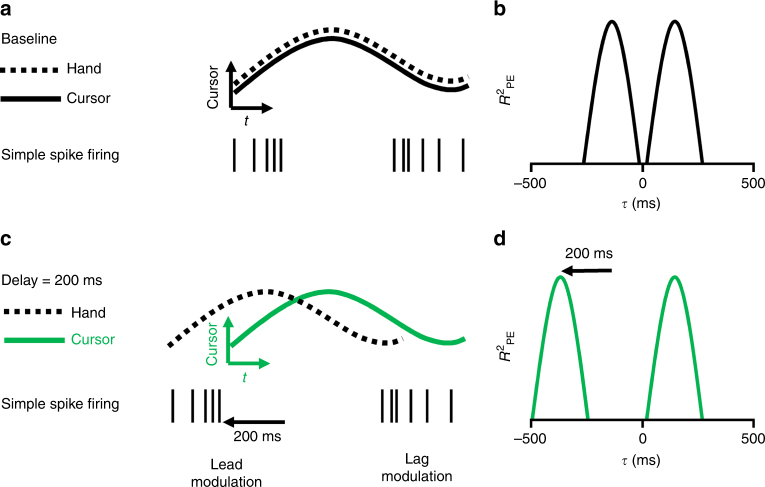Fig. 2.
Rationale for the delay condition experiment. a In the baseline condition the cursor (continuous trace) and hand (dashed trace) movements are indistinguishable. Simple spike firing both leads (left spike train) and lags (right spike train) the cursor movement. b Temporal R2 profile of the SS firing with the position error includes a leading (τ < 0) and lagging (τ > 0) peak. c In the delay condition, hand movement occurs before the cursor movement by the delay imposed. Based on the forward model hypothesis, the lead SS modulation is time-locked to hand movement and will shift earlier relative to cursor movement. The lag modulation should be time-locked to the cursor movement. d In the delay condition, the lead R2 peak should shift earlier and the lag R2 peak should be unchanged

